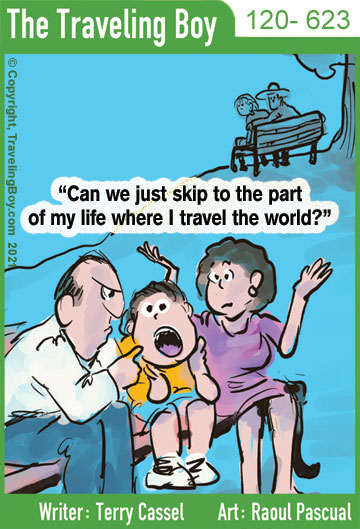Behind the Bucket List: What Americans Really Want in Travel
Courtesy Tours.com
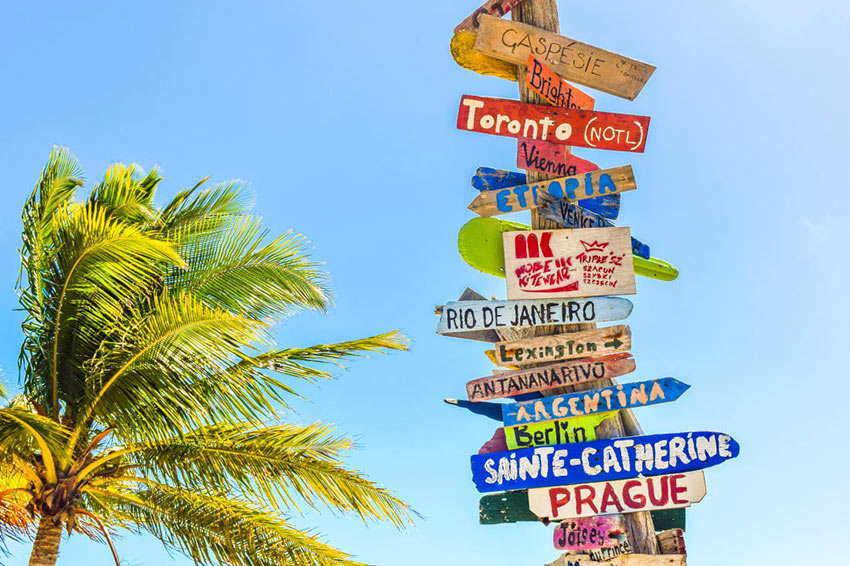
What do Americans want when it comes to Bucket List travel? A group from Provisional Living wanted to find out not only what’s on those lists, but why and how they got there. What they found was pretty revealing.
Sifting and qualifying a batch of some 2,000 Americans for answers, the survey found that while 95 percent of those polled claimed to have a Bucket List, only 66 percent had a plan of attack and 21 percent noted that their lists change every month.
The survey found a large percentage of people start their bucket list when they get to a certain age (38%). Other reasons for starting a bucket list include being influenced by some sort of media (12%), after they went on a trip (11%), illness or death in the family (8%), a recommendation from a family member or friend (5%), a change in relationship status (4%), being laid off from a job (3%) and an income change (3%). Only 4% of survey respondents said they didn’t have a bucket list.
Not surprisingly, the most popular experience on someone’s bucket list had to do with travel — 77% indicated some sort of travel goal on their list. In fact, the average number of travel destinations on a bucket list was eight. Half (52%) indicated they wanted to travel with a spouse or significant on bucket list trips. But 14% said they wanted to go solo. For those whose list was a no-go, finances was noted as the key reason.
Where do people want to go for a vacation of a lifetime?
The top countries on people’s bucket lists were Australia, Italy, Ireland, Japan, the United Kingdom, France, Greece, the Bahamas, Egypt and Germany. The top 20 cities that are on people’s must-see list are Honolulu, New York, Las Vegas, Anchorage, San Francisco, Los Angeles, New Orleans, Seattle, Austin, Boston, Denver, Atlanta, Portland, DC, Miami, Chicago, San Diego, Anaheim, Orlando and Albuquerque.
When it comes to bucket list items, some people are more willing than others to put their money on the list. The the largest amount of money people are willing to spend on a bucket list item was an average of $3,081 — with Boomers saying they would spend $3,204 and Millennials being a little bit more frugal by saying they would spend $2,959.
7 Things You Should Always Wear on a Plane
Courtesy Caroline Costellos
Dressing appropriately for air travel means knowing what will keep you comfortable on the plane — and given the cramped seats and various temperature changes on flights, this isn’t always easy.
What to Wear While Flying: Always Wear These Things on the Plane
The following seven items, which provide plenty of comfort plus a touch of style, are the best clothes for flying. Be the best dressed in the cabin with our guide to in-flight apparel.
Layers, Layers, Layers
Air travel is often an assemblage of various disparate micro-climates, from the sweat-inducing sunny tarmac to the arctic air-conditioned cabin during flight. So fight discomfort with plenty of layers. I like to wear a washable cotton scarf that’s a large enough to double as a wrap when it’s particularly chilly. Pashminas, shawls, wraps, cardigans, sweatshirts, vests, and light jackets are perfect. You can even fold or roll soft items, like cotton jackets, and use them as makeshift pillows during flight. Plus, the more layers you pile on your body, the less you need to pack in your luggage. Roll items and stuff them in your carry-on bag or under the seat in front of you if you’re too warm. A foldable, reusable bag like Baggu, which takes up almost no suitcase space and can even be scrunched up and stuffed into a pocket, is useful for toting extra apparel that you’ve taken off.
Layers that help you regulate temperature while flying also come in very handy when traveling through various (actual) climates. And for travelers hitting the road during shoulder season, when the weather is particularly unpredictable, layers are key for optimal comfort.
Breathable Fabrics
Maintain in-flight comfort and cleanliness by wearing breathable fabrics – materials like cotton, silk, or linen. Fabrics that don’t allow air to circulate will hold sweat on the skin, likely making you feel dirtier faster and probably necessitating a good spin in the washing machine upon landing. Natural fabrics are great, but moisture-wicking manmade fabrics are suitable options as well.
Support Or Compression Legwear
May doctors recommend that pregnant women wear support or compression stockings or socks in flight. But compression legwear is also a good choice for those with pre-existing medical conditions, travelers taking long-haul flights, and anyone who flies often. The socks or stockings, which promote blood circulation, help prevent swelling of the legs, and help guard against deep vein thrombosis (DVT), work by putting pressure on leg muscles and increasing blood flow.
Comfortable, Simple Shoes
It’s best to wear extremely comfortable, mostly flat shoes on the plane – think of your poor feet after hours or even days of sitting, standing, and walking en route to your destination. You’ll also want to select comfortable shoes that are easy to slip on and off when passing through airport security (as we advise in 10 Ways to Speed Through Airport Security.)
My favorite shoes to wear on a plane are Keds Skimmers for women, which offer sneaker-grade comfort but look more like cute ballet flats. Additionally, I recommend Toms (for men and women) and higher end Steve Madden (for women).
Clothes with Lots of Pockets
With all kinds of airline baggage fees dropping like hot bricks, clothes that do double duty as wearable carry-on bags are de rigueur. We love the Travel Vest from SCOTTeVEST (available for men or women), which is also one of our picks in 10 Best Travel Clothes to Wear on the Road. And there are myriad other travel jackets out there that feature an explosion of pockets, like the Around the World Jacket from Orvis, which appears to be exactly the same as a fishing vest. But it gets the job done, if you can pull off the angler look.
Loose-Fitting Clothing
As we mentioned before, DVT is a danger on flights, where travelers stuck in cramped seats for long periods of time are at greater risk for developing blood clots. To reduce the risk of getting DVT, the University of Washington Medical Center recommends avoiding “tight clothing, nylons, or socks (especially the type that are too tight at the top and/or leave marks on your skin) that might restrict blood flow through veins.” So leave your skinny jeans at home and opt for less restrictive garments like A-line skirts, loose-fitting dresses, or more relaxed-or wide-leg pants.
Something Stylish
Don’t throw fashion out the window. When it comes to dressing for a flight, much of our advice focuses on function. But dressing with a bit of style – while keeping conscious of comfort of course – could help you get a free upgrade. An anonymous source told Goop, “On a Virgin flight back to Heathrow, I spotted one of the staff’s monitors that read, ‘Look for well-dressed people to upgrade.’” The staff then began looking around for well-dressed people to upgrade. I’m not saying this will happen every time, but if you are looking to get upgraded, it helps to look smart. Throw a flowy, fashion-forward dress on over your compression socks and flash the airline staff a smile.
7 Common Travel Crises and How to Conquer Them
Courtesy Denise Caiazzo, Travel Planners International
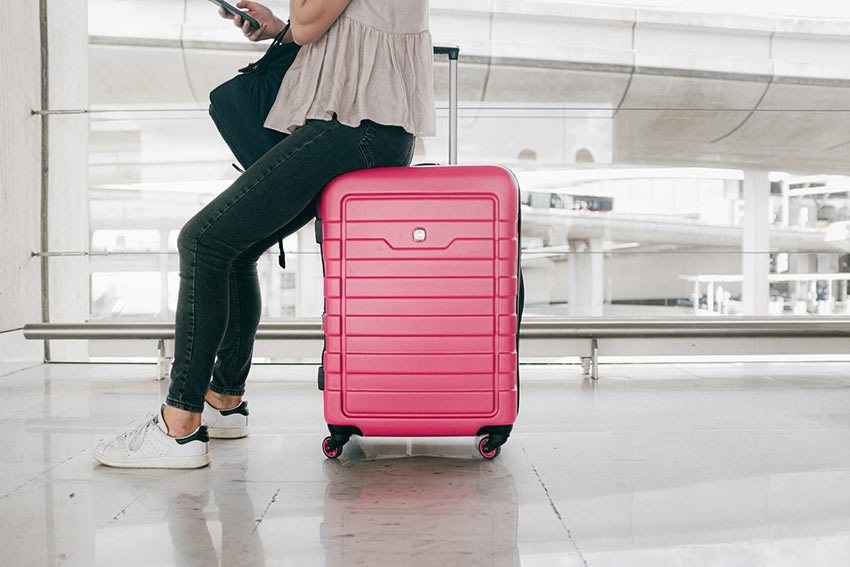
Travel advisors are well-equipped to handle just about anything travel-related. Give them a destination, a budget, and a few key interests, and they can whip up an entirely personalized itinerary that will make a client feel over-the-moon, as they make their travel dreams come true.
But what happens when an unforeseen travel nightmare occurs? We’re talking, “I can’t find my passport and I leave for my trip in a week!” or “Surprise, a bad storm hit, and all flights are canceled.”
1. Passport issues
Talk to any travel agent, and they’ll tell you that passport issues top the list of daily challenges. Michele Cartwright, CTA, president and travel advisor at Destinations by Design, said: “Just recently, a client contacted one of our agents about her adult daughter’s passport — it had expired and their vacation started the next day. We immediately obtained an appointment for the client to get an emergency passport at the regional passport processing center, changed her flights and hotel dates by one day, and made the trip happen for this mother and daughter.” Travel agent 1/travel crisis 0.
One of the simplest ways to avoid passport problems and save your clients’ trips, suggests Shelley Fry, marketing and media manager, at ExpeditionTrips, is to “collect passport details as soon as possible after booking, and double-check the expiration date. Or, if they’re booking last-minute, confirm passport validity before processing payment.”
Joe Lang, owner of Joe Lang Travel, keeps a tickler file of when his clients’ passports are approaching their 6-months-until-expiration date. He proactively sends them emails reminding them to take care of the renewal, so they’re always ready to travel.
Even when you do everything right, sometimes life throws a curve ball. Take this story, told by Azzam Hajyousif, CEO of TNE Consultants, LLC: “We had two clients in Athens, Greece, who had a bag stolen from them, which unfortunately had both of their passports, their wallets, their cash, and their airline tickets inside the bag. That was one really important bag. They contacted us via a collect call, and we coordinated with the U.S. embassy to help them get temporary passports. Fortunately, we had copies of their passports on hand in our file, and we were able to fax those copies to the U.S. embassy in Athens. We contacted Lufthansa regarding their airline tickets and were able to have the return portion of their ticket reissued for a small fee. The passengers were able to use their new passports and their reissued tickets to get back home.”
The moral of the story: Tell your clients to make copies of all of their identification documents. Keep one copy with a trusted family member and one with a trusted travel agent. And, tell them not to put all of their travel documents and money in the same bag.
2. Name misspelled
“Even with the best of intentions, stuff happens,” said Steve Leichner, of PSL Travel. “We have had the situation [of a name misspelling] happen a couple of times. Each time, we contacted the airline as soon as the mistake was found. In most cases, the airlines will work with you to correct it. However, if the name is so different that it looks like it was a spaceholder, they will charge a fee for a rebooking and use the current fare.”
3. Flights delayed
Everyone knows that flight delays are part and parcel of travel these days. Staying in communication with a dedicated travel advisor is the key to dealing with delays. Leichner relayed: “A few years ago, there was a convention in Lisbon, which ended on the day of a general strike in Portugal. As soon as the strike was imminent, we rearranged everybody’s schedules and extended their hotel stays, and changed their flights and notified them of the change. Instead of a real hassle, they had an extended vacation.”
He, along with nearly every travel advisor that Travel Market Report spoke to, also said to make sure your clients build enough time into their travel schedules (three hours for connecting flights at major airports), and that they have good travel insurance.
Tammy Hemsath, of Midwest Managed Travel, also encourages “corporate agencies to have some sort of emergency service line their travelers can call for immediate assistance. They will appreciate the fact they can get in touch with an agent at any time day or night, rather than calling the airline or standing in line at the airport.”
4. Lost luggage
Oh, the bane of lost luggage. What to do? “Hopefully most travelers know to keep critical items (e.g., prescriptions) with them on the plane, but we also suggest carrying on items that are hard to replace once abroad, because — for remote cruising destinations like the polar regions or Galapagos — having the right gear can make or break a guest’s trip,” said Fry of ExpeditionTrips.
Mike Edic, owner of Pioneer Travel, said: “It doesn’t hurt to take a picture of what your suitcase looks like. When I worked in the Lost and Found office for an airline, you’d be surprised at how many people had no idea what their suitcase looked like, or even what color it was.”
And Lang offered this tip: When you print out your travel insurance policy information, there should be a tag included that contains your information. You can laminate it and attach it to your luggage. Whoever finds it can scan it so that the insurance company can get it back to you.
Here’s a lost luggage story that wins the best travel tale prize in this category. Hajyousif described: “We had a client who was going to propose to his girlfriend in California. So, as part of the celebration, he purchased two extremely expensive bottles of wine (along the lines of $400 per bottle). He packed the bottles in his checked luggage, secured them so they wouldn’t break, and got on his flight. When he landed and got to baggage claim, his bags never showed up. They were going to celebrate her birthday in San Francisco and then fly to Arizona to meet some friends. He contacted the airline to find his bag, and by the time they found it, it was not going to arrive before his departure from San Francisco to Phoenix. Hence, he decided to postpone the proposal until they arrived in Arizona, so he could present the wine there. The wine, by the way, was from the year she was born, so it had some significance for the proposal.”
Fast-forward: The airline lost his precious bag for a second time on the second leg of their journey. Under duress and not his usual calm self, the client called Hajyousif’s office. “We were able to source two bottles of wine from a similar year as his fiancé‘s birthday, though not the same brand or vintage … He was able to complete his proposal, make it a very memorable event, and eventually was reunited with his original bottles of wine when he finally got back to Chicago.”
Now that’s how travel advisors can go above and beyond to assist their clients, who will forever remember how they saved the day.
5. Couple breaks up before the trip
“This has happened a few times with our clients,” said Leichner. “Unfortunately, it is totally unpredictable. Some couples will take a travel protection plan with a cancel for any reason clause. It is about a 20% higher cost than a regular policy, but it will cover the situation … Always contact the suppliers involved and explain the situation. Even though they have no obligation to do it, sometimes they will either refund the money or issues credits.”
Lang makes a good point that this really applies to any two or more people traveling together, where someone may change their mind about going on the trip. As a precaution, recommend cancel for any reason travel insurance.
6. Have to cancel trip
There are so many unexpected circumstances that can cause a traveler to have to cancel a trip. Tammy Hemsath, president of Midwest Managed Travel, said: “First and foremost, travel insurance is key for leisure clients, who need to cancel before the trip. My business is mostly business travel, so most of my corporate clients have a blanket insurance policy for all of their travelers when traveling for business. Small business travelers can purchase annual insurance for coverage, as well. This will provide additional medical insurance, lost or delayed baggage, trip cancellation, and trip delay.”
7. Scandalous circumstances
Some things just leave you shaking your head. Edic explained: “I have had clients come to me after talking to another local agency, and this agency telling them that the Dominican Republic would charge them a $799 departure fee at the airport if they didn’t pay it in advance. The agency would threaten them by saying they could be put in jail for refusing to pay this fee; and when the traveler would pay the fees directly to the agency, they would manipulate the receipts from the tour operator to reflect the updated total cost, and not what the actual trip cost.” When in doubt, travelers should always call another agency and verify pricing.
As long as people travel, there will be dilemmas that pop up now and again. Lang said: “Travel crises, handle them one at a time … one by one, if it happens, when it happens. And usually, it happens daily … Travel is not an exact science. This is another reason why it’s a good idea to use a travel advisor.”
Are Airlines Tracking Your Flight Searches (and Raising Prices)?
Courtesy Caroline Morse Teel

Are the Airlines Tracking My Flight Search?
Q: “My wife thinks that checking airfare on a certain site will somehow alert that airline and will drive the price up. So the more you look, the more the airline sees demand… and raises the prices. Is there any truth whatsoever to this?”
A: I’ve wondered this question myself, so I reached out to the airfare tracking experts at Airfarewatchdog, our sister site. The verdict? It’s an urban myth. Airfare Analyst Ricky Radka weighs in: “I literally look up airfare all day long and it stays the same — or sometimes goes down. What happens to make people think the airlines are tracking the search, is that the closer it gets to the departure date, the more people look — which is when airfare will increase.”
Hopefully that puts your wife’s mind at ease, and you can go back to arguing over where to fly to next rather than how often to check prices.
Perfume on a Plane
Q: “I am really sensitive to strong perfumes/fragrances. So much so, they often trigger debilitating migraine headaches. Every so often, I get a seatmate who lacked restraint in applying their favorite scent. Because I travel frequently, I am often sitting in an upgraded seat (either comfort or first class). I know I have the option to ask for another seat, but I don’t want to go back to the main cabin. What options do I have that won’t put me in the back of the plane or embarrass the pungent passenger?”
A: This is a tough question, as you can’t exactly force your seatmate to quickly go shower. But even if the plane is full, or your only option is to move to an inferior seat, there are still a few things you can do. According to Dr. Alan Goldsobel, Fellow of the American Academy of Allergy Asthma and Immunology, “The first tenet in dealing with allergies and asthma is to decrease one’s exposure to allergens (i.e., a pet) or an irritant (i.e., perfume or strong odors). If they can’t change their seat or location, an N95 mask could help.
“Having rescue medication available is important, either a rescue asthma inhaler or an antihistamine oral medication. There are some prescription nasal sprays that work fairly quickly and could help. (The usual over-the-counter nasal sprays, such as fluticasone, don’t give much quick relief.) Also, antihistamine eye drops (over-the-counter or prescription) can be helpful.”
Gratuities Included
Q: “Many all-inclusive resorts say ‘gratuities included.’ How much of what we pay to the resort actually goes towards gratuities to the employees who are providing day-to-day services to guests?”
A: Tipping while traveling can already be confusing, so it’s tempting to take the “gratuities included” message at face value. But it is likely that employees are not receiving extra tips on top of their salary unless you’re giving them gratuities directly.
I reached out to a number of all-inclusive resorts, and most of them declined to discuss how the included gratuities are distributed. However, a representative for Club Med commented: “As part of the all-inclusive package, gratuities and taxes are already added to the set price of all Club Med vacations. The gratuities are built into each employee’s salary and pay, pending their role and level. Additional tipping is not required and is up to the discretion of the guest, but we find many guests tip additional amounts for select activities and services (i.e., the spa).”
So if you truly want to show appreciation for workers who’ve helped you to have an amazing vacation, you should pack some cash for your all-inclusive vacation — even if gratuities are technically included.
Who Can Sit in the Exit Row?
Q: “I was on a flight several months ago when a very obese (not large, obese) person sat in the exit row. I was alarmed and concerned that this person would not be capable of assistance during an emergency. Many European airlines have weight restrictions regarding who can sit in an exit row. When will U.S. airlines do something similar?”
A: It’s unfortunate that airlines now sell exit row seats as premium seating, as this can lead some people who shouldn’t be sitting in the exit row to book the space (and not want to move).
The FAA has an extensive list of the requirements a person must meet to sit in the exit row, including:
- The ability to follow instructions given by a crewmember and impart those directions (in English) to other passengers
- Sufficient mobility and strength to open the emergency exit (which weighs about 35-45 pounds)
- Be 15 years of age or older
As to your specific question, some airlines, including Southwest and Alaska, have additional rules as to who may sit in an exit row — including a rule excluding passengers who require a seat belt extension.
However, it’s important to remember that you can’t judge a person’s strength or mobility simply by looking at them, so don’t immediately assume that the flyer you saw wasn’t capable of meeting the exit row requirements. Flight attendants are fully knowledgeable of the requirements for sitting in an exit row, and check the seats before takeoff to make sure that everything is in order.
Free Checked Bags for Military?
Q: “I was told that some airlines let veterans check bags for free. Is this true?”
A: Unfortunately, most airlines aren’t that nice. I only found one airline, Allegiant, that offers free checked bags to military veterans. (Allegiant has some pretty great perks for veterans and active duty military — click here to see the full list.) The rest of the major airlines in the U.S. all offer free checked bags to active duty military only. It varies by airline if the perk is offered for personal travel, or only to those traveling on orders.
Buying an Extra Seat
Q: “My husband is a pretty big guy and is very uncomfortable in tiny plane seats. On our last flight [with United], I paid for an additional seat. At the last minute, the airline sold the “empty” seat to a stand-by passenger. Did we have any recourse at all?”
A: Seats shouldn’t be given away, but it definitely happens in this era of oversold flights. I reached out to United to find out what happened. According to a spokesperson for the airline, when you buy an extra seat, you should make sure that you receive two boarding passes. When you are boarding the plane, make sure you scan both passes — otherwise the system will show one of the seats as a no-show, and could be given away to a standby passenger.
If your seat is accidentally given away, or another passenger decides to re-seat themselves there, you should talk to a flight attendant to let them know that both seats were purchased and are already taken.
Overtourism is a Problem; Here’s What We Can Do
Courtesy Milena Nikolova, ATTA
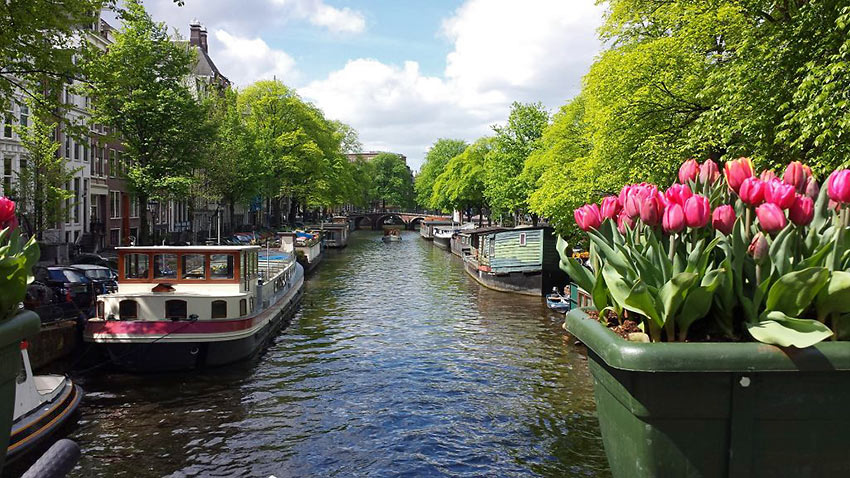
By now, it should be crystal clear that a major issue plaguing the travel and tourism industry is overtourism. Still unsure what overtourism really means and who it concerns? We recently explained the concept in detail and unpacked why every single person and entity working in the adventure travel industry needs to be aware of and care about overtourism.
Dwelling on the problem doesn’t fix anything, however, so in the spirit of the Adventure Travel Trade Association’s (ATTA) ethos, we want to steer our coverage of overtourism beyond talk and toward action. We want to share thoughts about what we can do to ensure a destination benefits from healthy tourism and is not ruined by the perils of overtourism. A few destinations recently launched new long-term strategies demonstrating smart approaches to managing tourism growth for a healthy future. It is clear every destination is unique and not every best practice is automatically applicable to all, but we would like to highlight the strategic thinking, new ideas, and positive efforts for other destinations seeking to address overtourism in their own backyards.
Many destinations experience excessive growth because they cast a broad net in their marketing efforts targeting large and loosely defined demographic segments based only on country of origin. Identifying travelers based on nationality is highly ineffective as two neighboring families may travel very differently and display holiday behavior that impacts destinations differently.
In a market reality where 1.4 billion international travelers are looking for their next place to visit, destinations need to be much more selective in the type of visitors they invite. An effective approach is using behavioral segmentation that profiles travelers based on their values, travel styles, and likely behaviors during holiday experiences. This allows marketing efforts to be calibrated so they target only the types of guests who will be appreciative and respectful to what the destination has to offer, and whose visit is likely to generate the best possible local impact.
The Netherlands is a great example of using behavioral profiling and constructing a destination management strategy around it. The recently published document exhibits contemporary smart destination thinking “to amalgamate tourism with the everyday society as optimally as possible, to optimize the benefits for Dutch people and the economy, and to minimize overload trouble,” particularly with its personas that present the preferred visitor target groups — visitors that “add value and will not cause trouble.” Further, the destination also states a need to “stop actively attracting groups of visitors who are a nuisance or do not add sufficient value,” which includes “limiting the accommodation and entertainment products aimed at these groups” or ceasing to offer these products altogether. These statements in the strategy reflect the spirit and philosophy that prompt precise identification of the visitor that is a best fit for the destination.
The Dutch tourism board has selected five groups representing the best matches between the destination’s offerings and travelers’ desires. The five personas — Upper-class Paul, Postmodern Nora, Achiever Michael, Mainstream Peter, and Traditional Mary — are smart persona descriptions grounded in extensive research and feature their main demographic characteristics, favorite car and house, a peek at their daily calendar with meetings and notes, hobbies, and other personal preferences. This general information is followed by insight about travel preferences, preferred holiday styles, and a detailed overview of likely traveler behavior if the persona visits the Netherlands. This includes a description of what is in their luggage, where they are likely to stay, and what activities they are likely to engage in.
Developing such detailed personas requires thorough research and analysis, but it is exceptionally beneficial because it generates a very detailed image of the type of visitors the destination wants to target through marketing efforts. The detailed information about likely behaviors visitor before and during a holiday in the Netherlands allows for precise targeting not only at the destination level but also by all stakeholders on the ground. This allows for smarter destination-level decision-making, better itinerary design, and proper shaping of services and pricing strategies. It also guides all stakeholders in aligning products and services from a destination-level perspective in a way that is gentle to the local place and residents.
The Faroe Islands: Setting the Right Performance Indicators to Measure Success
An increasing number of stakeholders in the global tourism ecosystem are feeling uneasy with the continued focus on volume as the main measure of success in the sector. Many destinations acknowledge the number of arrivals and heads in beds may not be the best way to track economic impact, but transitioning away from that is not an easy task.

Why is using volume-based measurements a problem? The main reason is volume-based success measurements produce volume-based decision-making. If destination teams’ work quality and future budgets are decided on the basis of how many tourists cross the border, they will continue implementing measures to attract more people regardless of local impact and their personal opinions about whether this is right or wrong.
If they are not productive or sustainable measurements, why do we continue striving to reach maximum capacity? The main reason we are still stuck with purely volume-based measures is that all attempts to produce reliable measurements of the comprehensive socio-economic impacts of tourism produce complex, multi-layered indicator systems, which destinations find challenging to adopt. If we are to replace arrivals as the norm for measuring growth we need to find an alternative of up to three non-volume-related indicators that are not complicated to monitor and measure.
The Faroe Islands routinely challenges the norm. Just a few months ago, it surprised professional circles and went against conventional wisdom with a campaign announcing it was closing “for maintenance.” Unsurprisingly, the Faroe Islands once again challenged the tourism status quo with its sustainable tourism development strategy 2025. This strategy clearly states “tourism is not solely about numbers; it is also about adding non-material value to a society and its people, and about ensuring that our country continues to develop as an interesting place to live.”
The strategy notes “growth is only a good thing if it happens sustainably, with the unique nature and culture of the islands, and the needs of the Faroese people, as its principal beneficiaries. Instead of trying to halt an inevitable development, tourism should be used as a tool to create a better society for all Faroe Islanders.” To ensure the destination keeps this vision in mind, it has formulated three clear, key objectives to pursue as indicators for success:
- Socio-economic revenue,
- Agreement of visitors with brand promise, and
- Perception of local citizens that tourism is net positive.
Measuring socio-economic revenue that stays in the local economy and directly impacts the labor force, tax revenues, and local investments is a much better way to ensure tourism really makes a difference in the local economy and not strictly for individual companies that capture the entire profit from tourist spending. If success is framed in the form of local impact, decision makers will be motivated to use incentives and tools encouraging stronger local impact.
The brand promise the Faroe Islands makes to future visitors is that they will experience an “unspoiled, unexplored, and unbelievable” place. This promise can be fulfilled only if guests feel uncrowded and welcome and can engage with nature and the local culture in an authentic manner. The destination seeks a 90% agreement with the brand promise. This means it hopes to achieve 90% guest satisfaction, which is likely to result in word-of-mouth promotion.
Measuring resident perception is a fantastic alternative to complicated multi-layered indicators tracking tourism’s many impacts. Local communities live in the destination and are the first to sense negative impacts such as rising property prices, overcrowding, and shops closing that service locals. Instead of trying to track all of these possible effects, measuring residents’ perceptions about whether tourism is good for their home place is an easy and effective indicator.
As with every solution, it is likely the set of success measures chosen by the Faroe Islands will have its disadvantages. Regardless of whether this turns out to be the case or not, it is worth celebrating the bold effort to find feasible alternatives to tracking arrivals and test them for the benefit of an entire industry.
Visit Flanders: Committed to Putting Residents and the Place First
ATTA team members frequently talk about the need to view tourism as a vehicle for bettering places and societies, rather than as a goal in itself. This belief is at the core of another recent and smart destination strategy — that of Visit Flanders. According to the destination, “local governments, enterprises, and residents hold the keys to harnessing the positive power of tourism in their places,” and this positive power should be applied so visitors are “moved, enriched, enlivened, and enchanted by the unique spirit of a place.”
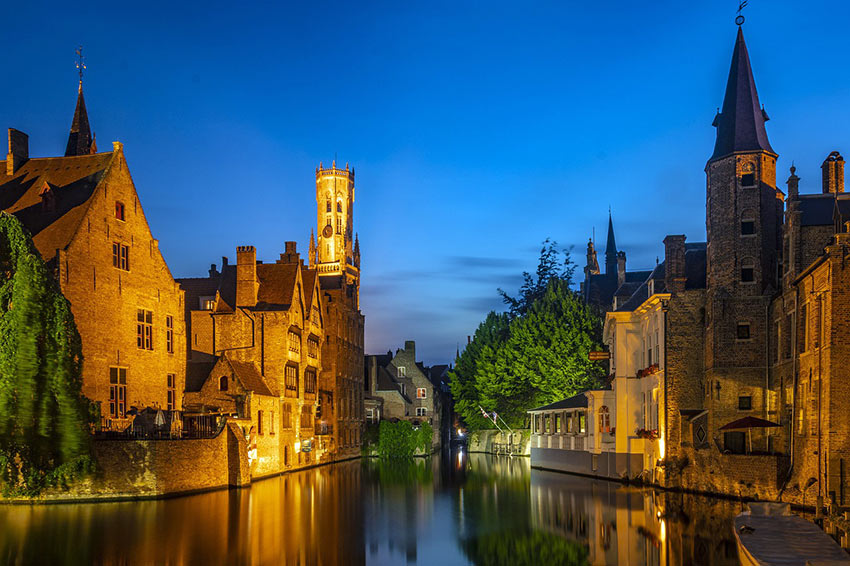
The idea that destinations and their residents should take more control over how they want tourism to happen is the essence of the much-needed transition from destination marketing to destination management. Visit Flanders is promoting a vision of a place where residents, entrepreneurs, and visitors interact in ways that enrich the place and its beauty rather than the other way around: “Being aware, taking responsibility, connecting, and collaborating” are “the four ingredients for making the transition from a tourist destination to a flourishing place and community.”
Framing success around the flourishing destination leads to a different mindset in planning and managing tourism, and it automatically reframes tourism as a vehicle leading toward a bigger goal. The wellbeing of a place and its residents cannot be sacrificed in the name of tourism.
Vienna: Nudging Guests to Experience, Not #Experience
The new media landscape has empowered destinations to reach and engage visitors in many new ways, but the rise of digital and social media has also produced some undesired behaviors. There are countless stories about sudden waves of visitors overwhelming charming streets, flowering fields, or pristine natural areas. Many of these visitors are inspired by images shared on Instagram or Facebook to take their own selfies in the same places. In addition to fueling harmful spikes in visitor flows, social media platforms have shifted travelers’ focus away from the destination and toward the screen of their mobile devices. This transforms the visitor into a body that is merely physically present in the destination but is not actually experiencing it in a mindful manner.
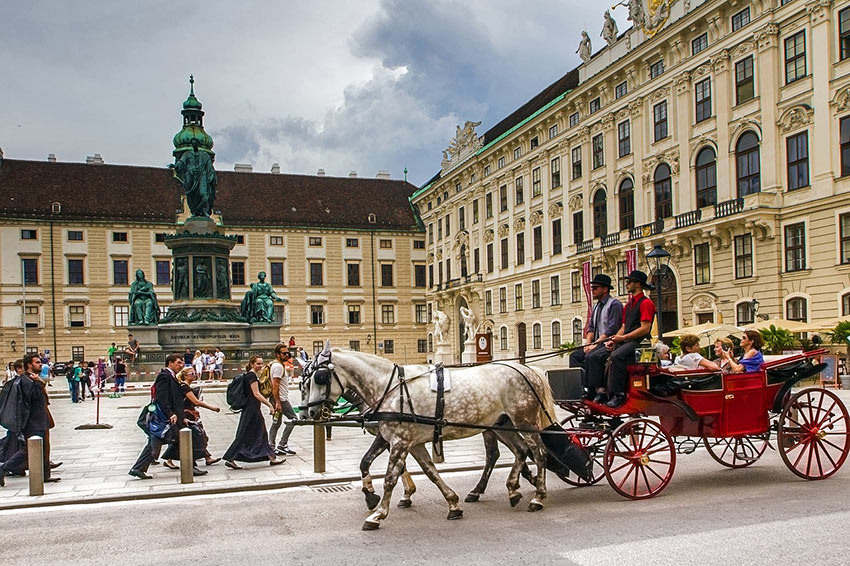
A recent campaign by the Vienna Tourist Board seeks to remedy that. Vienna was at the forefront of using social media in its marketing efforts, so it is not surprising it’s leading the way toward undoing some of the damage produced by today’s digital obsession. Under the tagline “Enjoy Vienna. Not #Vienna.” the campaign seeks to encourage its guests to put their devices aside and use all their senses to engage with one of Europe’s signature cities. Don’t worry, the campaign promises, ”going offline or enjoying the benefits of digital detox does by no means mean missing out on adventures or explorations all over the city. It’s all about taking in the beauty, impressions, and flavors Vienna has to offer.”
Ensuring visitors connect with the place and are mindfully present are necessary conditions for respectful behavior toward the destination and its residents, and Vienna’s effort to move guests’ attention from the device to their surroundings is worth celebrating.
As we continue monitoring the travel industry for new ways of thinking about smart destination management and ensuring a healthy future for the places people visit, we will continue sharing them. And, as we learn about, explore, and share these innovative approaches and strategies, we’ll also introduce aspects of them in our work with partner destinations around the world in an effort to keep tourism as a force for good. We are open to hearing from you about other best practices you come across and think are worth celebrating and sharing.
10 Crazy Las Vegas Tours Everyone Should Experience at Least Once
Courtesy
ed**********@sm***********.com
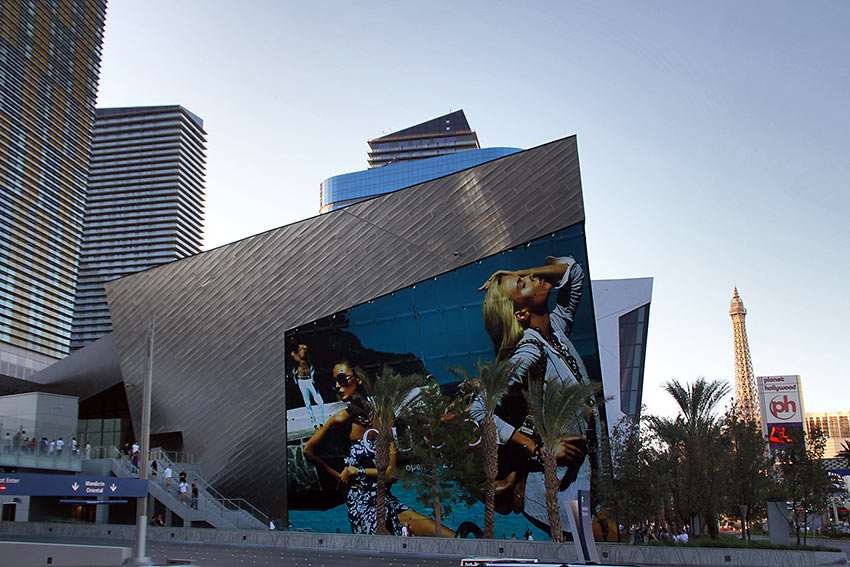
You know about the celebrity chef restaurants, world-class residencies, and high-limit tables in Las Vegas. But there’s another side of Sin City just begging to be explored. On your next trip to this neon-draped desert city, check out these unique Las Vegas tours that’ll have you rethinking what a weekend in Vegas really means.
The Wine Yoga Experience
Center yourself with a winning combination of fire breathing and Cabernet. The Wine Yoga Experience lets you get your namaste on while sharing a glass of wine and a ton of fun with like-minded yogis. Glasses are typically outdoors, and your wine is served in a souvenir cup so you can pour yourself a refill back at home and relive the magic of your tipsy vacation shavasana all over again.
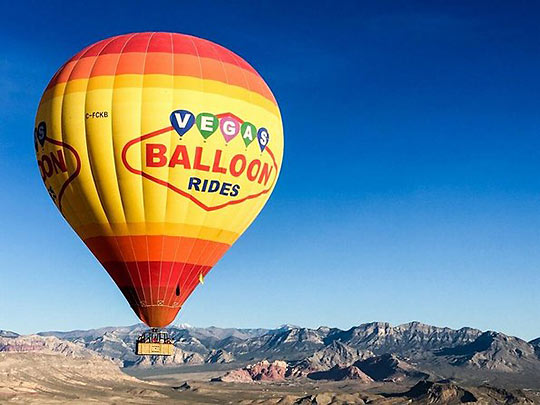 Las Vegas Hot Air Balloon Ride
Las Vegas Hot Air Balloon Ride
See the more scenic side of Sin City with this Las Vegas tour in a hot-air balloon that takes you on a 3.5-hour trip over the painted mountains of Red Rock Canyon, the iconic Las Vegas Strip, and more. There’s even a picnic and Champagne toast, or you can sign up in the winter months to take off at sunset and get the full impact of the neon skyline.
Trapeze Lessons in Las Vegas
Fulfill your big-top dreams via a 90-minute trapeze lesson that brings you up close and personal with a unique peek at the zany activities offered in hidden Las Vegas. Instruction comes courtesy of a circus arts professional, and you’ll learn enough to attempt a fancy release-and-catch move before you go. Chalk your hands, grasp the bar, and experience the ultimate rush of soaring through the air during a 1.5-hour trapeze lesson. Located just minutes from the Las Vegas Strip, you’ll follow the instruction of a professional coach who will ensure you have the time of your life.
 Downtown Las Vegas Food Tour
Downtown Las Vegas Food Tour
Las Vegas may be known for gambling, but it’s also home to some of the most delectable, diverse cuisine in the entire country. The unique 2.5-hour Las Vegas Food Tour includes edibles and beverages from some of the city’s most popular spots, as well as tidbits about Vegas architecture, culture, and history.
The Weird, Wacky and Wonderful Bar Crawl of Fremont Street
Bar hop the length of Fremont Street, a pedestrian thoroughfare that cuts through the heart of historic downtown Vegas. Weave between kiosks, take in the endless amounts of kitsch, look up for the art installations and light show, and try everything from scorpion tequila shots to craft beers along the way.
Happy Hour on the High Roller at the LINQ
Cocktails? Check. Sky-high observation wheel? Check. Put them together and you’ve got happy hour on The High Roller, a sort of enclosed Ferris wheel with swanky air-conditioned pods, each equipped with a full bar. You get thirty minutes to make your loop-de-loop, with audio commentary so you know what you’re looking at, and plenty of frosty adult beverages, too.
Area 51 Extraterrestrial Tour
We are not alone — or at least that’s what this full-day, private tour of spooktastic Area 51 will have you thinking. Whether you’re into UFO sightings or hoping to stumble across a hidden treasure trove of evidence at this hush-hush military site, you’ll have a chance to find it during this exclusive, extraterrestrial-themed outing complete with an alien-themed lunch.
Las Vegas Reality Show VIP Tour
Sometimes it seems like Vegas is one giant reality show and we’re all on candid camera, but there are actual TV shows set in the Valley, too. This fully narrated Las Vegas tour takes ticket holders around filming locations used for shows like Ultimate Sports Cards and Memorabilia, Tanked, Pawns Stars, and American Restoration. You also get VIP access which allows you to skip the lines, a major bonus as some sites can get pretty congested.
Signature Smash Rage Room Experience
Rage against the machine (or just let your failings at the blackjack table loose somewhere safe) at Sin City Smash. You’ll have access to a huge array of breakables, ranging from dishes to printers to lamps. Once you put on your safety gear, you’ll get choose your weapons and enter the Rage Room for 15 minutes of no-holds-barred amusement. You even get to pick your own playlist, so your soundtrack matches your mood at this unique Las Vegas experience. Perhaps best of all, all the broken bits are cleaned up by staff who then take it to the recycling bin to ensure everyone’s fun is suitably eco-friendly.
Las Vegas Helicopter Night Flight
No matter how many times you’ve been to Vegas, the city is a different sight altogether once the sun sinks behind the mountains and the Strip lights up. This 15-minute flight delivers a unique bird’s-eye view of legendary landmarks such as the historic downtown area, the Bellagio fountains, and the Mirage. Sparkling wine and snacks are included, but you may be too busy gawking to fully appreciate your treats.
These US States are the Most Fun – And the Least – According to WalletHub
Courtesy WalletHub

The measure of “fun” is subjective. But that doesn’t stop us from trying. To that end, WalletHub recently released its 2019 ranking of most fun states in America.
For the ranking, the personal finance website compared fun in the 50 U.S. states using 26 weighted metrics related to entertainment, recreation and nightlife. Criteria included the number of restaurants and specific attractions per capita, the average cost for entertainment (such as movies and alcohol), along with personal and government spending on recreation.
California tops the list of most fun states. That’s no surprise given that WalletHub says it has the most movie theaters and restaurants per capita.
Rounding out the top five are Florida, New York, Washington and Colorado, in that order.
According to the ranking, West Virginia is the least fun state in the union. The mountain state didn’t perform well in several criteria: It had the fewest performing-arts theaters per capita (behind Mississippi) and fewest fitness centers per capita (behind Hawaii). West Virginia also tied for lowest variety of arts, entertainment and recreational establishments.
Also toward the bottom of the list are Vermont, Rhode Island, Delaware and Mississippi, ranked 46 through 49, respectively.
Scroll through the full list here to see the top 10 most fun states, according to WalletHub.
The Best Navigation Tools to Keep You on Track on a Car Trip, Here or Abroad
Courtesy Catharine Hamm, L.A. Times
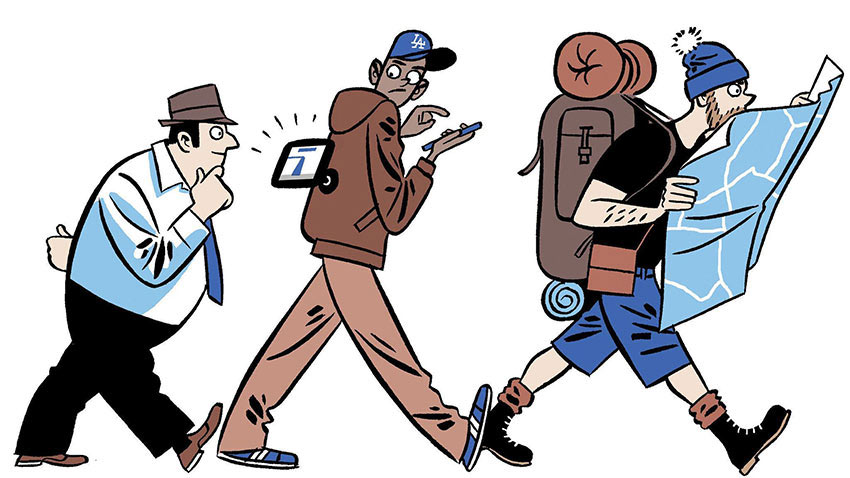
Question: I am getting ready to spend a couple of months in Scotland, England and Ireland and wonder whether you have any advice/information on the best ways to navigate on this trip.
Answer: Renting a car and hitting the high roads of Britain and Ireland brings with it some freedoms but also some complications. Two travel experts offer suggestions to make your travels more fun and less fraught, but keep this in mind: No system is perfect; if your goal is never to be lost, you might want to dial back your expectations.
Your three best friends on a car trip are your smartphone, a navigation system such as Garmin or Tom Tom, which might be built in to your car or might be a stand-alone, and — wait for it — a map, maybe even a paper one. The first two rely on satellite GPS; the latter on you.
There’s also guessing and stopping to ask for directions, but those are, um, less reliable and tend to lead to shouting if you’re traveling with someone. I’m walking away from those last two methods for purposes of sanity preservation.
Let’s look at the pros and cons of each of the previous three.
Using an app on your smartphone
Pro: Your phone is always with you. The map apps you choose are usually reliable and frequently updated. Make a wrong turn and you’ll be rerouted.
Con: If you lose your cell signal, your maps won’t update or will do the digital equivalent of dithering.
Amy Nichol Smith, who recently spent time in Scotland, relied heavily on a Google map app on her smartphone. She upgraded her phone to an international plan.
“It was totally worth it,” said Smith, a technology analyst for FitSmallBusiness.com, an online publication for small-business owners. “I was able to see exactly where there was traffic and construction.”
To save on data charges, she downloaded directions and switched her phone to airplane mode.
Andy Abramson, chief executive of Comunicano and of Brand Communication Design, both marketing services agencies, often buys a local SIM card when he’s abroad so he has access to the fastest cellphone networks. You can swap your SIM if your phone is unlocked (usually that means it’s paid for); you will need to contact you carrier for instructions on how to do so.
In a subsequent email, McIntosh noted that a phone tended to slip and slide and wasn’t handy to look at. If it’s your choice for navigation, do yourself a favor and buy an inexpensive, portable mount.
My travel version clips to the car’s air vent, and I carry a two-slot USB plug powered by the cigarette lighter so I can plug in my phone. Find out the laws at your destination to be sure you aren’t breaking them by use or placement of a holder.
Built-in or freestanding navigation system
Pro: If you’re out of cell range, these will work; some advocates say the directions and the amount of warning you receive for turns are better.
Advertisement
Con: It’s an additional cost to buy a free-standing unit (or to rent a car with a navigation system). The maps are not updated as frequently as your phone apps.
Abramson chooses his system based on where he is. On some back roads in France, where he travels frequently, “I had no cell coverage, and I was using Google Maps, so I switched over to the on-board GPS,” he said. “It was much more accurate.”
Among the leading providers of stand-alone units are U.S.-based Garmin and Netherlands-based TomTom.
A map
Pro: Relies on nothing but your good sense.
Con: Relies on nothing but your good sense.
Smith and Abramson learned to read maps when they were children and became the family navigators. Both suggest getting the lay of the land from a map and studying the anomalies of the road.
Smith noted that studying maps could, for instance, steer you away from toll roads in the U.S., important if your rental car company automatically charges for them and tacks on a fee, or differentiating between high and low roads in Scotland.
For those who lack sense of direction, becoming familiar with where the landmarks are on a map can help make the unfamiliar less so.
For help on learning to read a map, check out YouTube as well as lesson plans from the National Education Assn. and National Geographic.
On a car trip in Ireland two summers ago, I found the best way to ensure we were never lost: We hired a driver, which was far less expensive than we thought. And the idea of traveling in a private car without screaming fights about whose fault it was we were lost? Priceless.
Have a travel question, problem or dilemma? Write to
tr****@la*****.com
. We regret we cannot answer every inquiry.
7 Travel Gadgets You Don’t Need & What to Buy Instead
Courtesy Nevin Spearman
There are all sorts of gadgets out there that promise to make traveling easier but often fall short. Some are cheaply made and fall apart after one trip. Others are just impractical, a realization that only comes after lugging them around the globe. Below are some of the not-so-great travel gadgets we’ve either purchased ourselves or have spotted in the wild, and the handy alternatives that you may find more useful.
Selfie Sticks
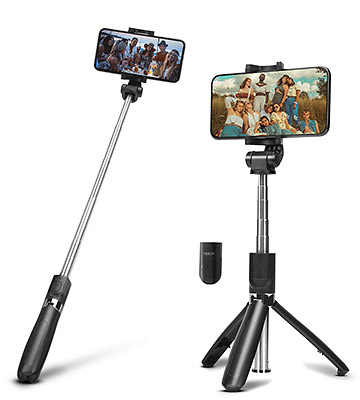
If you live in any metropolitan city, you’ve seen at least one or two groups of tourists using these sticks to snap pics while sightseeing. You may find them useful in the moment but they can be really dangerous and also make you stand out. Instead, just use a camera timer or live action camera like GoPro or Polaroid Cube, or just go old school and ask a stranger to snap your pic.
Solar Powered Chargers
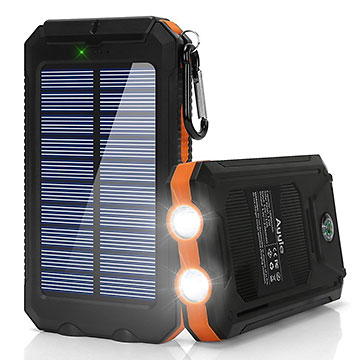
Unless you are going to spend a hefty amount of time in direct sun, most solar powered chargers may not be the best choice for keeping your devices charged. Go for a powerful rechargeable one like this one from Anker.
Jet Lag/Hangover Cures
 There are countless products online claiming to cure hangovers and prevent jet lag. Make sure to do some digging before purchasing these products. There are also a few things you do to help with jet lag in advance of your flight, such as adjusting your internal clock before your trip. When it comes to hangovers, the best way to avoid one is to drink moderately.
There are countless products online claiming to cure hangovers and prevent jet lag. Make sure to do some digging before purchasing these products. There are also a few things you do to help with jet lag in advance of your flight, such as adjusting your internal clock before your trip. When it comes to hangovers, the best way to avoid one is to drink moderately.
Waterproof Umbrella Hats
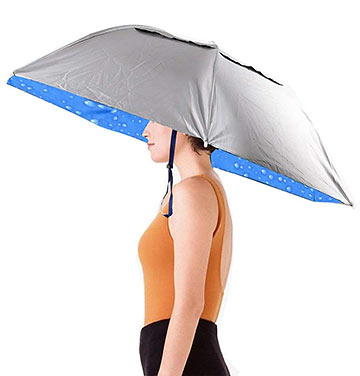
Unless you’re actually going to spend the day sitting in a downpour, you probably don’t need an umbrella hat. A much more useful and definitely less weird option is a poncho or rain jacket. However, if you’re really interested in umbrella hats, we’ve seen some for under $20.
U-Shaped Travel Pillows
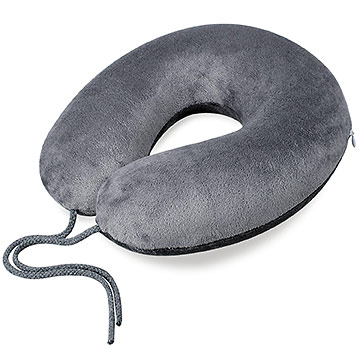
We’ve all seen and probably even purchased one of these travel pillows at the airport prior to a flight. They’re everywhere but there are a much better neck-supportive pillows available. One of my favorites, the Trtl Pillow, is scientifically proven to keep your head in a better position. The pillow is also easy to store while traveling. Another great option is the J-Pillow. This one looks a little weird, but adds extra support that you just can’t get from a traditional U-shaped pillow.
Smart Suitcases

Not every suitcase is as smart as they claim. When purchasing a so-called smart suitcase, it’s best to double check that the battery can be removed or you might run into major problems with security agents scanning your bag or even confiscating it entirely. It’s best to use a traditional spinner or go for a suitcase with a removable battery like these from AWAY.
Instant Cameras
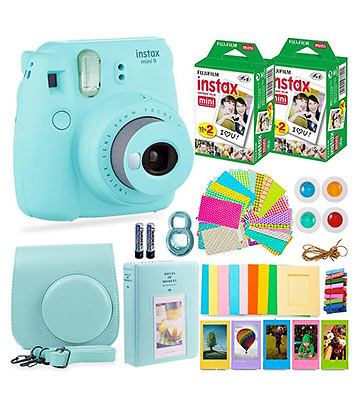
Remember how excited we all were to take digital photos? Capitalizing on folks who romanticize all things analog, there have been quite a few new instant film cameras released over the past few years. Instead of paying $50+ for one, plus buying expensive refills, why not just purchase a pack of disposable cameras for your trip? Or just stick to your phone and add filters. Apple also now has filters built into it’s camera app.








